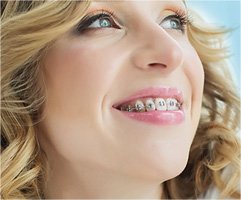Keeping your teeth healthy is more than avoiding sugary sweets. You need to get into a good brushing and flossing routine in order to prevent the build-up of calcium and plaque. So how can you keep your teeth healthy by avoiding plaque build-up and calcium deposits? We’ll tell you how.

Preventing Plaque
First off, plaque is a buildup of bacteria on the teeth that gives it a whitish, slimy appearance and feel. It can lead to tooth and gum decay if you don’t do something about it, so make it a priority to remove plaque before it becomes a problem.
- The American Dental Association says to brush twice a day using a soft-bristled brush and fluoride toothpaste, according to WebMD. This will prevent plaque from even forming at the start, but you have to be diligent in getting all areas of the mouth – particularly the back teeth. Don’t neglect the gums and tongue too. A good rule of thumb is to brush for about two minutes.
- Floss every day for better oral health. The American Dental Association (ADA) recommends using 18 inches of floss for the best results. Wind it around your middle fingers and grip it tightly. With a gentle pressure, guide the floss between each tooth so it curves into a “C” shape. Rub up and down, taking your time to get up by the gum line. Flossing is especially important before bed, to remove all the food buildup from the day.
- Rinse your mouth out. Just remember: mouth wash simply gives you better breath, while antiseptic mouth rinse actually reduces the bacteria in your mouth that can cause plaque. Try to rinse for about 30 seconds before spitting it out.
- Cut out the sugary foods, particularly sticky candies. If you must eat raisins, granola bars, gummy candy and anything else that clings to your teeth, be sure to brush immediately afterwards. When you fail to remove sugar from the teeth, plaque thrives on it to create decay. For less chance of cavities, avoid sticky and sugary foods altogether.
- Visit the dentist twice a year. Your dentist and hygienist will be able to identify problem areas that you should work on.
Nix Calcium Deposits
These white spots on your teeth are known as tartar or calcium deposits. The most effective way to combat calcium deposits on your teeth is to get a professional cleaning at your dentist office. Since you can’t remove the tartar at home, there are a few things that you can do to help keep tartar build up at bay.
- Brush your teeth twice a day, preferably with a tartar control toothpaste.
- Floss daily, this will help reduce the build up
- Consult your dentist for other options to help prevent tartar. Regularly planned visits will help keep your teeth healthy.
Preventing the accumulation of calcium despots and plaque is easy when you are armed with the right knowledge. Happy brushing!













